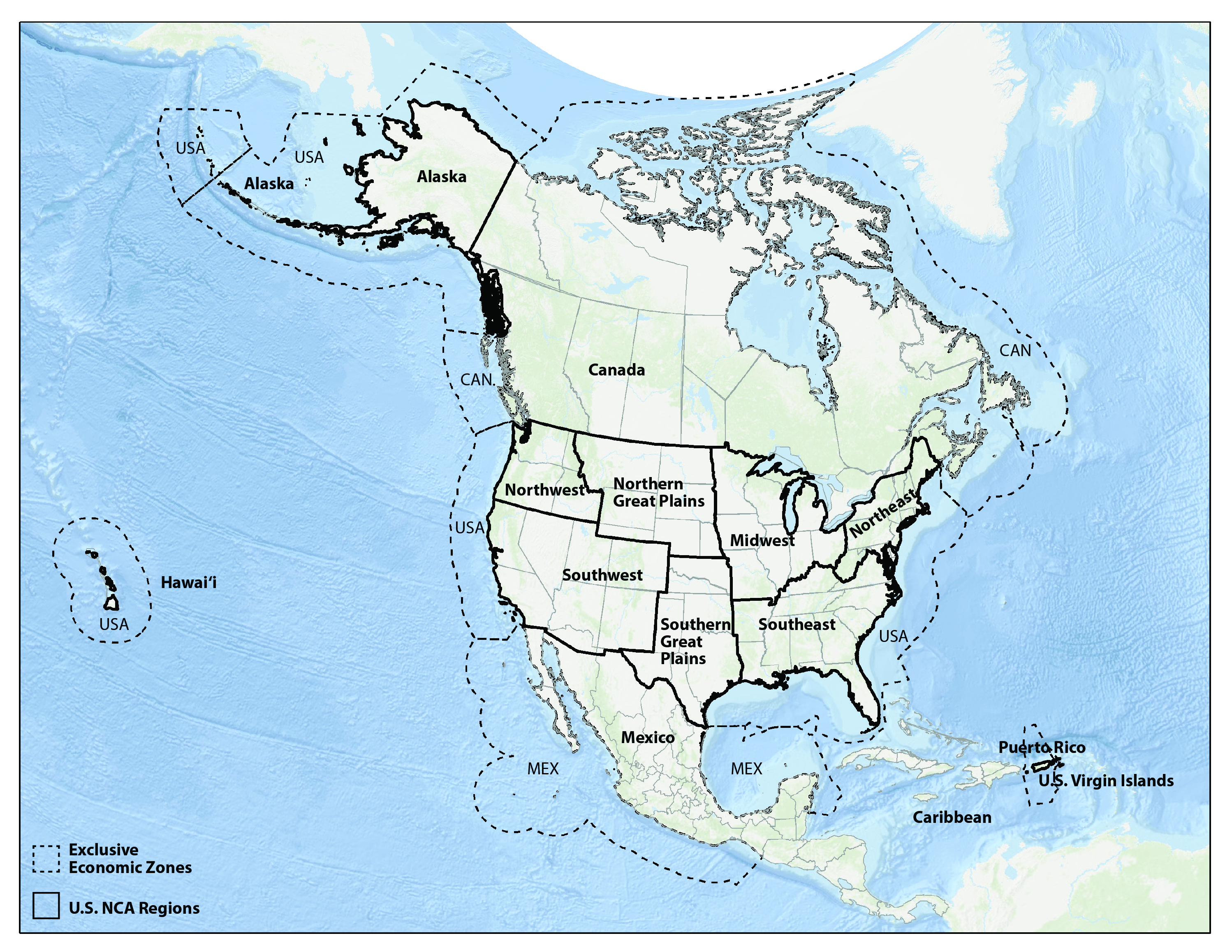Birdsey, R., M. A. Mayes, P. Romero-Lankao, R. G. Najjar, S. C. Reed, N. Cavallaro, G. Shrestha, D. J. Hayes, L. Lorenzoni, A. Marsh, K. Tedesco, T. Wirth, and Z. Zhu, 2018: Executive summary. In Second State of the Carbon Cycle Report (SOCCR2): A Sustained Assessment Report [Cavallaro, N., G. Shrestha, R. Birdsey, M.A. Mayes, R. G. Najjar, S. C. Reed, P. Romero-Lankao, and Z. Zhu (eds.)]. U.S. Global Change Research Program, Washington, DC, USA, pp. 21-40, https://doi.org/10.7930/SOCCR2.2018.ES.
Executive Summary
Central to life on Earth, carbon is essential to the molecular makeup of all living things and plays a key role in regulating global climate. To understand carbon’s role in these processes, researchers measure and evaluate carbon stocks and fluxes. A stock is the quantity of carbon contained in a pool or reservoir in the Earth system (e.g., carbon in forest trees), and a flux is the direction and rate of carbon’s transfer between pools (e.g., the movement of carbon from the atmosphere into forest trees during photosynthesis). This document, the Second State of the Carbon Cycle Report (SOCCR2), examines the patterns of carbon stocks and fluxes—collectively called the “carbon cycle.” Emphasis is given to these patterns in specific sectors (e.g., agriculture and energy) and ecosystems (e.g., forests and coastal waters) and to the response of the carbon cycle to human activity. The purpose of SOCCR2 is to assess the current state of the North American carbon cycle and to present recent advances in understanding the factors that influence it. Concentrating on North America—Canada, the United States, and Mexico—the report describes carbon cycling for air, land, inland waters (streams, rivers, lakes, and reservoirs), and coastal waters (see Figure ES.1).
Figure ES.1: Domain of the Second State of the Carbon Cycle Report

The questions framing the publication A U.S. Carbon Cycle Science Plan (Michalak et al., 2011) inspired development of three slightly modified questions that guide SOCCR2’s content and focus on North America in a global context:
How have natural processes and human actions affected the global carbon cycle on land, in the atmosphere, in the ocean and other aquatic systems, and at ecosystem interfaces (e.g., coastal, wetland, and urban-rural)?
How have socioeconomic trends affected atmospheric levels of the primary carbon-containing gases, carbon dioxide (CO2) and methane (CH4)?
How have species, ecosystems, natural resources, and human systems been impacted by increasing greenhouse gas (GHG) concentrations, associated changes in climate, and carbon management decisions and practices?
SOCCR2 synthesizes the most recent understanding of carbon cycling in North America, assessing new carbon cycle findings and information, the state of knowledge regarding core methods used to study the carbon cycle, and future research needed to best inform carbon management and policy options. Focusing on scientific developments in the decade since the First State of the Carbon Cycle Report (SOCCR1; CCSP 2007), SOCCR2 summarizes the past, current, and projected state of carbon sources, sinks, and natural processes, as well as contributions by human activities. In addition to CO2 and CH4, the report sometimes discusses nitrous oxide (N2O), a GHG associated with activities and processes that affect fluxes of carbon gases.1 SOCCR2 also describes improvements in analysis tools; developments in decision support; and new insights into ecosystem carbon cycling, human causes of changes in the carbon cycle, and social science perspectives on carbon. Since publication of SOCCR1, coordinated research from agencies in the three North American countries has enabled innovative observational, analytical, and modeling capabilities to further advance understanding of the North American carbon cycle (see Appendix D: Carbon Measurement Approaches and Accounting Frameworks). Some of the report’s main conclusions, based on the Key Findings of each chapter, are highlighted in Box ES.1, Main Findings of SOCCR2 .
See Full Chapter & References